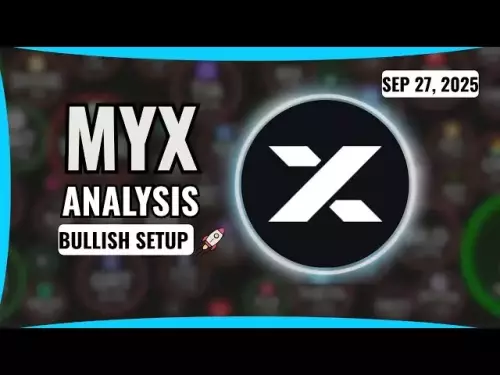-
 bitcoin
bitcoin $109523.663807 USD
-0.13% -
 ethereum
ethereum $4019.526508 USD
2.06% -
 tether
tether $1.000482 USD
0.00% -
 xrp
xrp $2.776815 USD
0.18% -
 bnb
bnb $958.942396 USD
0.12% -
 solana
solana $204.294698 USD
3.84% -
 usd-coin
usd-coin $0.999693 USD
0.00% -
 dogecoin
dogecoin $0.232115 USD
2.09% -
 tron
tron $0.338028 USD
0.84% -
 cardano
cardano $0.790920 USD
1.50% -
 hyperliquid
hyperliquid $44.871443 USD
5.60% -
 ethena-usde
ethena-usde $1.000322 USD
0.04% -
 chainlink
chainlink $21.034165 USD
2.60% -
 avalanche
avalanche $28.794831 USD
-0.54% -
 stellar
stellar $0.360466 USD
1.24%
How to use RSI in a rebound market? How to judge the strength of the rebound?
RSI helps identify entry points in rebound markets: look for it to move from below 30 to above 50, signaling a strong recovery in cryptocurrencies like Bitcoin.
May 22, 2025 at 08:07 am
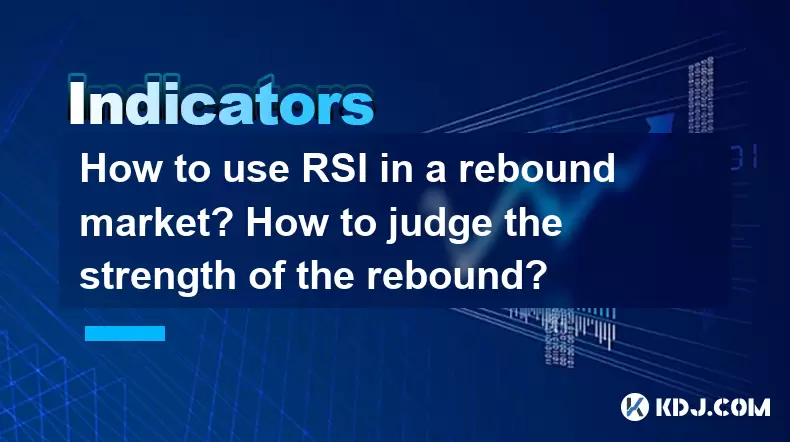
The Relative Strength Index (RSI) is a momentum oscillator that measures the speed and change of price movements. It is widely used in the cryptocurrency market to identify overbought or oversold conditions, which can be particularly useful in a rebound market. In this article, we will explore how to effectively use the RSI in a rebound market and how to judge the strength of the rebound using this tool.
Understanding RSI in a Rebound Market
The RSI is typically displayed as an oscillator (a line graph) on a scale of 0 to 100. Traditionally, an asset is considered overbought when the RSI is above 70 and oversold when it is below 30. In a rebound market, where prices are recovering from a previous decline, the RSI can provide valuable insights into the momentum of the recovery.
In a rebound market, the RSI can help traders identify potential entry points. When the RSI moves from an oversold condition (below 30) towards the middle range (around 50), it may indicate that the asset is regaining strength and could be a good time to enter a long position. Conversely, if the RSI remains stubbornly below 30 despite the price rebound, it might suggest that the recovery is weak and likely to falter.
Setting Up RSI on Your Trading Platform
To use the RSI effectively, you need to set it up on your trading platform. Here are the steps to do so on a common platform like TradingView:
- Open TradingView and select the cryptocurrency pair you wish to analyze.
- Click on the 'Indicators' button located on the top toolbar.
- Search for 'RSI' in the search bar and select the Relative Strength Index from the list.
- Adjust the settings as needed. The default period is usually set to 14, but you can change this to suit your trading strategy. A shorter period (e.g., 9) will make the RSI more sensitive to price changes, while a longer period (e.g., 25) will make it less sensitive.
- Apply the indicator to your chart by clicking 'Add to Chart'.
Identifying Entry Points with RSI
Once you have the RSI set up on your chart, you can start using it to identify entry points in a rebound market. Here’s how:
- Look for the RSI to move from below 30 to above 30. This indicates that the asset is moving out of an oversold condition and could be starting to rebound.
- Watch for the RSI to cross above the 50 level. This can be a strong signal that the rebound is gaining momentum and might be a good time to enter a long position.
- Monitor the RSI for divergence. If the price of the asset is making new lows but the RSI is not, this could be a bullish divergence and a sign of a strong rebound.
Judging the Strength of the Rebound
To judge the strength of the rebound using the RSI, you need to look at several factors:
- The speed of the RSI movement. If the RSI moves quickly from below 30 to above 50, it suggests a strong rebound. Conversely, a slow movement might indicate a weaker recovery.
- The RSI's ability to stay above 50. If the RSI remains above 50 after crossing it, this is a sign of sustained momentum and a strong rebound.
- The presence of bullish divergence. As mentioned earlier, if the price is making lower lows but the RSI is making higher lows, this is a strong indication of a robust rebound.
Using RSI with Other Indicators
While the RSI is a powerful tool on its own, it can be even more effective when used in conjunction with other indicators. Here are some combinations to consider:
- RSI and Moving Averages. Use the RSI to identify potential entry points and moving averages to confirm the trend. For example, if the RSI crosses above 50 and the price is above a key moving average (like the 50-day MA), this could be a strong signal for a rebound.
- RSI and MACD. The Moving Average Convergence Divergence (MACD) can help confirm the momentum indicated by the RSI. If the RSI suggests a strong rebound and the MACD is also showing bullish signals, this can increase the confidence in the trade.
- RSI and Volume. Volume can provide additional insight into the strength of the rebound. If the RSI is showing a strong rebound and this is accompanied by high trading volume, it is a sign of strong market participation and a more robust recovery.
Practical Example of Using RSI in a Rebound Market
Let's walk through a practical example of using the RSI to identify and trade a rebound in the cryptocurrency market:
- Select a cryptocurrency that has recently experienced a significant decline. For this example, let's say it's Bitcoin (BTC).
- Set up the RSI on your chart with a period of 14.
- Monitor the RSI. Suppose Bitcoin's price has dropped significantly, and the RSI has fallen below 30, indicating an oversold condition.
- Watch for the RSI to move above 30. As Bitcoin's price begins to recover, the RSI starts to climb. When it crosses above 30, this is a potential entry point.
- Confirm the rebound. If the RSI continues to rise and crosses above 50, this is a strong signal that the rebound is gaining momentum. Additionally, if there is bullish divergence (Bitcoin's price is making higher lows while the RSI is also making higher lows), this further confirms the strength of the rebound.
- Enter a long position. Based on these signals, you decide to enter a long position on Bitcoin, expecting the rebound to continue.
- Monitor the trade. Keep an eye on the RSI and other indicators to see if the rebound continues. If the RSI remains above 50 and other indicators like the MACD are also bullish, hold the position. If the RSI starts to fall back below 50, it might be time to consider exiting the trade.
FAQs
Q1: Can the RSI be used effectively in all market conditions, or is it more suitable for certain types of markets?A1: The RSI can be used in various market conditions, but it is particularly useful in trending markets and rebound markets. In a strong uptrend or downtrend, the RSI can help identify potential overbought or oversold conditions that might signal a temporary pullback or continuation of the trend. In a rebound market, the RSI is especially valuable for identifying the strength and momentum of the recovery.
Q2: How does the choice of RSI period affect its effectiveness in a rebound market?A2: The choice of RSI period can significantly impact its sensitivity to price movements. A shorter period (e.g., 9) makes the RSI more sensitive and can help identify quicker rebounds, but it may also produce more false signals. A longer period (e.g., 25) makes the RSI less sensitive and can be better for identifying more sustained rebounds. The choice depends on your trading style and the specific market conditions.
Q3: Are there any common pitfalls to avoid when using the RSI in a rebound market?A3: One common pitfall is relying solely on the RSI without considering other factors like volume, market sentiment, and other technical indicators. Another pitfall is entering trades too early based on the RSI crossing above 30 without waiting for confirmation of sustained momentum. Always use the RSI in conjunction with other tools and analysis to increase the accuracy of your trades.
Q4: How can I use the RSI to manage risk in a rebound market?A4: The RSI can help manage risk by providing signals to exit trades. For example, if you enter a long position based on the RSI moving above 50, you can set a stop-loss order if the RSI falls back below 50. Additionally, if the RSI moves into overbought territory (above 70), it might be a signal to take profits or tighten your stop-loss to lock in gains. Always use the RSI as part of a comprehensive risk management strategy.
Disclaimer:info@kdj.com
The information provided is not trading advice. kdj.com does not assume any responsibility for any investments made based on the information provided in this article. Cryptocurrencies are highly volatile and it is highly recommended that you invest with caution after thorough research!
If you believe that the content used on this website infringes your copyright, please contact us immediately (info@kdj.com) and we will delete it promptly.
- Bitwise, Solana, and the ETF Filing Frenzy: What's the Deal?
- 2025-09-28 06:25:16
- Ruvi AI: Surpassing Tron's Demand, the Next 100x Token?
- 2025-09-28 06:25:16
- BSE, IPOs, and Crypto Funds: A New York Minute on India's Regulatory Tightrope
- 2025-09-28 06:30:01
- Ruvi AI: The Avalanche Ecosystem's Next Big Thing, Blazing Through Phase 3
- 2025-09-28 06:30:01
- Tron, Ruvi AI, and Institutional Backing: What's the Buzz?
- 2025-09-28 06:30:01
- Q-UP: Is Coin Flipping the Next eSports Sensation? A Look at Fairness in Gaming
- 2025-09-28 06:30:15
Related knowledge
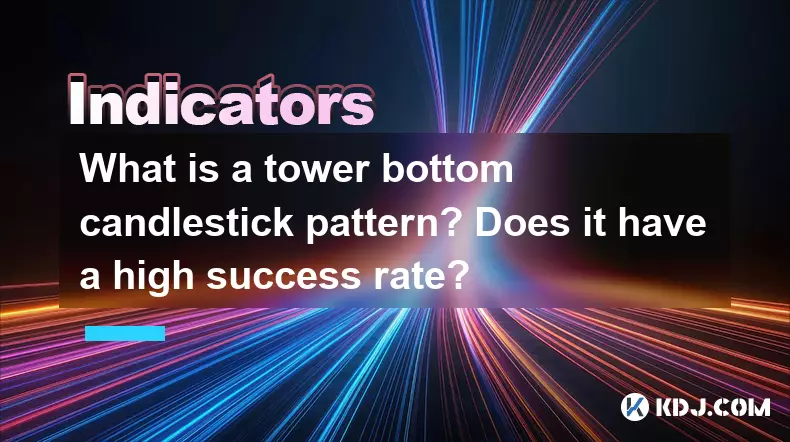
What is a tower bottom candlestick pattern? Does it have a high success rate?
Sep 22,2025 at 07:18am
Tower Bottom Candlestick Pattern Explained1. The tower bottom candlestick pattern is a reversal formation that typically appears at the end of a downt...
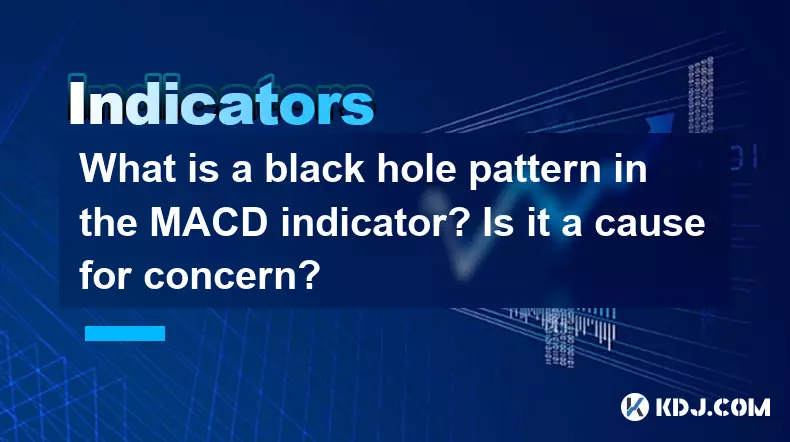
What is a black hole pattern in the MACD indicator? Is it a cause for concern?
Sep 21,2025 at 06:54pm
Bitcoin's Role in Decentralized Finance1. Bitcoin remains the cornerstone of decentralized finance, serving as a benchmark for value and security acro...

How can I use the psychological line (PSY) to determine market sentiment?
Sep 17,2025 at 02:19pm
Understanding the Psychological Line (PSY) in Cryptocurrency TradingThe Psychological Line, commonly referred to as PSY, is a momentum oscillator used...
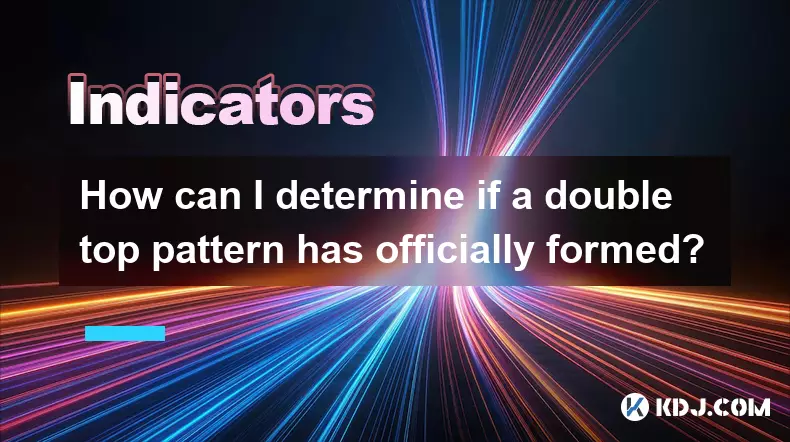
How can I determine if a double top pattern has officially formed?
Sep 21,2025 at 03:18am
Understanding the Structure of a Double Top Pattern1. A double top pattern consists of two distinct peaks that reach approximately the same price leve...
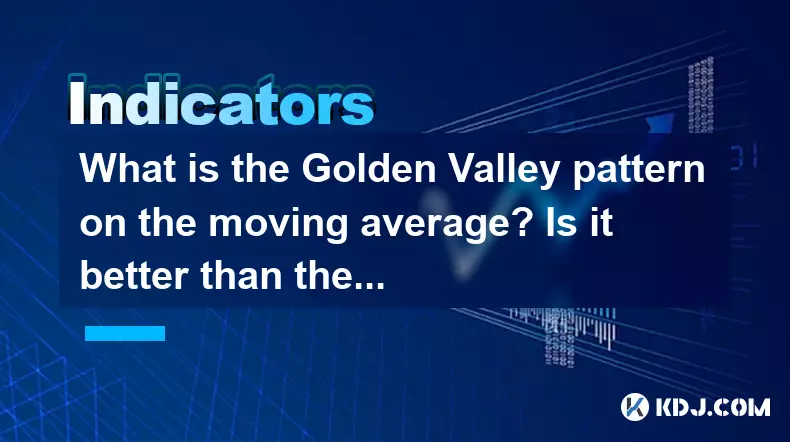
What is the Golden Valley pattern on the moving average? Is it better than the Silver Valley pattern?
Sep 21,2025 at 02:54pm
Understanding the Golden Valley Pattern in Moving Averages1. The Golden Valley pattern is a technical formation observed in cryptocurrency price chart...

What does a death cross of the RSI in the strong zone (above 50) mean?
Sep 17,2025 at 10:54pm
Understanding the Death Cross in RSI Context1. The term 'death cross' is traditionally associated with moving averages, where a short-term average cro...

What is a tower bottom candlestick pattern? Does it have a high success rate?
Sep 22,2025 at 07:18am
Tower Bottom Candlestick Pattern Explained1. The tower bottom candlestick pattern is a reversal formation that typically appears at the end of a downt...

What is a black hole pattern in the MACD indicator? Is it a cause for concern?
Sep 21,2025 at 06:54pm
Bitcoin's Role in Decentralized Finance1. Bitcoin remains the cornerstone of decentralized finance, serving as a benchmark for value and security acro...

How can I use the psychological line (PSY) to determine market sentiment?
Sep 17,2025 at 02:19pm
Understanding the Psychological Line (PSY) in Cryptocurrency TradingThe Psychological Line, commonly referred to as PSY, is a momentum oscillator used...

How can I determine if a double top pattern has officially formed?
Sep 21,2025 at 03:18am
Understanding the Structure of a Double Top Pattern1. A double top pattern consists of two distinct peaks that reach approximately the same price leve...

What is the Golden Valley pattern on the moving average? Is it better than the Silver Valley pattern?
Sep 21,2025 at 02:54pm
Understanding the Golden Valley Pattern in Moving Averages1. The Golden Valley pattern is a technical formation observed in cryptocurrency price chart...

What does a death cross of the RSI in the strong zone (above 50) mean?
Sep 17,2025 at 10:54pm
Understanding the Death Cross in RSI Context1. The term 'death cross' is traditionally associated with moving averages, where a short-term average cro...
See all articles


























